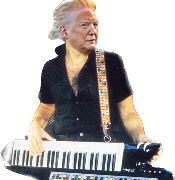|
Woolie Wool posted:If you've been curious about the fancy payware planes but didn't want to shell out 40 bux, or you just like the Cessna 152, the the freeware JPLogistics mod upgrades the Asobo 152 with improved physics, grognard level cockpit interaction with circuit breakers, doors, etc., carburetor simulation (including flooding and How easy is it to install this having never done so?
|
|
|
|

|
| # ? May 27, 2024 04:33 |
|
sigher posted:How easy is it to install this having never done so? Installing stuff into MSFS is easy. The hardest part is probably finding the "community" folder (MSFS puts it in a stupid place), but once that's done, all you do is unzip the downloaded file and drop it into the community folder.
|
|
|
|
If you think you're going to install a bunch of mods, I highly recommend using a manager like this https://github.com/NathanVaughn/msfs-mod-manager to keep track of everything. It lets you easily enable and disable things with a single click, which is great when something you installed is now tanking your frames with the latest update and you're trying to pin it down. (if you aren't used to GitHub, click "releases" on the center right side of the project page to get to the downloads.)
|
|
|
|
does anyone have thoughts on the carenado planes? i've seen comments about how they don't really fix stuff, but they also just released a Skymaster and that's my favorite ga airplane (until i purchase cessna and make them do a push-pull turboprop Grander Caravan)
|
|
|
|
Carenado airplanes can be summarized as "look good, fly okay, support sucks". Their visual models and textures are generally pretty good (somewhere around the quality of the MSFS default models), their sounds are generally adequate, and the flight models are generally on par with the default airplanes, in that they'll be close-ish to real world performance numbers, but will make zero efforts to fix things like the wonky propeller modeling on twins or oddball ground handling that are present on default airplanes. Systems modeling will typically be about as deep as the default airplanes as well, but their QA/beta process is clearly flawed, since their airplanes usually launch with quite a few bugs that may or may not get fixed. Carenado also includes almost zero documentation for their products, so finding a copy of a real-world POH online is typically a good idea. Where Carenado falls down is their total lack of support for products post release. For FSX and P3D, their business model was "release airplane, release one patch to fix glaring flaws, abandon airplane for next release", which is pretty much what they do with MSFS as well. The only reason Carenado have done more than that is because MSFS updates typically break something that renders some of their products unusable, but even when it's a simple fix, Carenado takes weeks longer than other developers to fix stuff, and if they break something else in the process, it's a crapshoot if it ever gets fixed. Before MSFS, Carenado products typically relied on users deciding to fix stuff themselves (especially with flight models or systems), but since Marketplace purchases are all encrypted, that's essentially impossible now.
|
|
|
|
Did anyone buy the Twin Otter? If so, do you like it?
|
|
|
|
Why did no one tell me there was a Twin Otter?? Also, yes, how is it?
|
|
|
|
I wanted it but it doesn't seem all that great so I'll just stick with the Kodiak for now https://www.youtube.com/watch?v=Tg2CKmCyQVM TL;DW terrible sound mixing, autopilot doesn't work right (default because of Xbox compatibility according to Aerosoft), electrical system isn't modeled, feathering props doesn't work, outbound radials are broken, and some other stuff There have also been posts about how the manual talks about a bunch of systems that were in the P3D version but are missing in the MSFS one Gasoline fucked around with this message at 23:09 on Jan 20, 2022 |
|
|
|
Vahakyla posted:How is it a major pain in the rear end? 1. The interface is fussier and more cluttered than the old dials and radios, and when I was learning VORs I did not want to poke at a G1000 while on the verge of task saturation carrying out completely unfamiliar procedures. Before the NXi with its larger, clearer fonts, this was compounded by the fact that the legacy G1000 is very difficult to read in VR, at least on the Oculus Quest 2. 2. You can't track two VORs at once, which comes in handy with things like lining up for an ILS approach, or flying between two VORs where one is too far to be picked up from the location of the other. 3. The G1000 always has the map display and magenta line, so you either have to go out of your way to fly without a flight plan loaded or else the avionics will show you GPS information, which is a problem for learning how to navigate without GPS. 4. I think a heading indicator is better than an HSI for learning VORs because it makes you think of your course, your heading, your deviation, wind, and scanning your instruments rather than just chasing one yellow line in one gauge. Once you have learned that, an HSI is great, but I think it encourages bad habits when your first start flying VORs. For these reasons, the addition of a DME over the Asobo model, and the fact that it's slow and gives you a lot of time to fix your mistakes, the JPLogistics 152 is a perfect VOR trainer and vastly superior for the job to any glass aircraft. Woolie Wool fucked around with this message at 23:31 on Jan 20, 2022 |
|
|
|
The Piper Warrior from just flight is also a great trainer. It has two separate VOR gauges, and you can swap into GNS530/GTN750 if you want to step into glass panel stuff. Of course itís a payware plane but what the heck.
|
|
|
|
I have their Arrow/Turbo Arrow pack and I love it, but getting the Warrior when I already have the Arrow seems redundant.
|
|
|
|
Woolie Wool posted:[quote="Woolie Wool" post="520864403"]1. The interface is fussier and more cluttered than the old dials and radios, and when I was learning VORs I did not want to poke at a G1000 while on the verge of task saturation carrying out completely unfamiliar procedures. Before the NXi with its larger, clearer fonts, this was compounded by the fact that the legacy G1000 is very difficult to read in VR, at least on the Oculus Quest 2. The useability of the G1000 interface in VR is a valid concern because it's not quite as smooth as in reality due to your fingers being way better than the mouse. Woolie Wool posted:2. You can't track two VORs at once, which comes in handy with things like lining up for an ILS approach, or flying between two VORs where one is too far to be picked up from the location of the other. Yes you can. Press the PDF soft key, you will see 2 soft keys BRG1 and BRG2. Woolie Wool posted:3. The G1000 always has the map display and magenta line, so you either have to go out of your way to fly without a flight plan loaded or else the avionics will show you GPS information, which is a problem for learning how to navigate without GPS. I do recall there being a setting to disable the flight plan line. Woolie Wool posted:4. I think a heading indicator is better than an HSI for learning VORs because it makes you think of your course, your heading, your deviation, wind, and scanning your instruments rather than just chasing one yellow line in one gauge. Once you have learned that, an HSI is great, but I think it encourages bad habits when your first start flying VORs. This honestly sounds luddite-ish, kind of like IRL pilots preaching about the six pack, or some car guy talking about manual transmission teaching you how to drive better. I've never been super convinced by any of these arguments. If you want to learn it the old way, do it the old way. If you wanna learn more modern techniques, use the G1000. The old one isn't somehow better.
|
|
|
|
A 152 with a DME interrogator isÖ A thing that Iím not convinced exists in real life. Iím also not convinced there are any left where both CDIs are ever functional simultaneously.
|
|
|
|
Why wouldn't it exist? People put aftermarket avionics in planes all the time.
|
|
|
|
Woolie Wool posted:Why wouldn't it exist? People put aftermarket avionics in planes all the time. The gently caress for? Torturing IFR students?
|
|
|
|
MrYenko posted:A 152 with a DME interrogator is… A thing that I’m not convinced exists in real life. I’m also not convinced there are any left where both CDIs are ever functional simultaneously. The 152s I trained in had DME, and I used both CDIs all the time. When I got my license way back in 2001 GPS displays were still relatively new and expensive. Why you would want to simulate that, I dont know but *Shakin my fist* Back in my day you had to be able to fly an NDB approach blindfolded up hill in the snow both ways. 2Jets fucked around with this message at 00:58 on Jan 21, 2022 |
|
|
|
I mean, Woolie Wool specifically says that they want to practice VOR-only navigation. In that case, I think doing it in a plane that only has mechanical VORs is correct. If you have a GPS in real life, you're going to use the GPS, even if only to verify what the VOR is telling you. It is definitely different flying with a moving map, even if it's just off to the side, vs. looking at a paper chart, watching a needle swinging around and trusting that you're where you're supposed to be. I don't think the actual process of tuning into and tracking a VOR is harder one way or the other. The G1000 definitely gives you extra information, though -- some of which you can't turn off -- and if you want the challenge of flying without it, you gotta set up in a plane with a six-pack. MrYenko posted:A 152 with a DME interrogator isÖ A thing that Iím not convinced exists in real life. Iím also not convinced there are any left where both CDIs are ever functional simultaneously. We've got one at the club. It's even been used for instrument checkrides, supposedly! MrYenko posted:The gently caress for? Torturing IFR students?  No autopilot either. Even Jimmy Doolittle had an autopilot. Sagebrush fucked around with this message at 01:04 on Jan 21, 2022 |
|
|
|
azflyboy posted:Carenado airplanes can be summarized as "look good, fly okay, support sucks". thanks for this. i had a couple drinks and ended up buying the skymaster, thinking i've got 48 hours to return it just in case. i'm far from a pilot but it seems pretty badass to me, the older instruments are cool as hell and it sounded really good + mean when i throttle up. i did a night flight over shanghai at 750 ft and was able to figure out all the autopilot / gps stuff to not die (i was less successful with the f-18). so far so good, but i need to find a manual with the checklists and such because nothing shows up in the dumb msfs checklist the milk machine fucked around with this message at 01:10 on Jan 21, 2022 |
|
|
|
I have the carenado ovation. That one has analogue instruments with a gn750 (?) That you can use as a backup and to look up frequencies and the like. At night or in poor visibility it's satisfying to grapple yourself from one waypoint to the next by making the needles line up where they should. It's definitely more rewarding gameplay than following the purple line. Feels adventurous.
|
|
|
|
2Jets posted:The 152s I trained in had DME, and I used both CDIs all the time. When I got my license way back in 2001 GPS displays were still relatively new and expensive. Why you would want to simulate that, I dont know To give you something to do, presumably. En route a G1000 automates everything except talking on the radio, and they're probably working on automating that too. I mean, presumably. I'm not a pilot of any kind. VOR-only navigation also seems to be getting quite difficult these days, especially outside the US.
|
|
|
|
Vor/Ndb only from east coast us to EuropeÖ.. in a steamgauge cessna. Enjoy the 6 hours of dead space between points in Canada on your way to Greenland. Only cheaters pull up the vfr map. Tl;dr I ran out of fuel looking for a beacon Iím not convinced is in the game
|
|
|
|
VORs were only ever common in the USA. Like yeah, major airports around the world would have them of course, but no country has or had anything like the network of Victor airways in the United States. Other countries just don't have the volume of general aviation traffic (or the country size, or scale of air traffic in general) to make it worthwhile. And yes, even in the USA they're gradually getting shut down as GPS has taken over enroute navigation duties. NDBs were a lot more common in other countries, since while they're not as fancy as a navigation source, they are much cheaper -- literally all you need is an AM radio transmitter and antenna tower, and there's no calibration involved. Lord Stimperor posted:At night or in poor visibility it's satisfying to grapple yourself from one waypoint to the next by making the needles line up where they should. It's definitely more rewarding gameplay than following the purple line. Feels adventurous. You should really try the Nevada bush trip (with all assists off, obviously). Doing pure pilotage VFR navigation across like 900 nm at 90 knots, using nothing but SkyVector charts and the compass and the Mk. I Eyeball the whole way, is one of the most rewarding things I've done in a flight sim. Sagebrush fucked around with this message at 01:22 on Jan 21, 2022 |
|
|
|
Sagebrush posted:
The Nevada trip is a good one. Some of the airfields blend in so well you cant see them until you're right on them and you will run out of fuel. I did it in VR and a few legs felt a little too real when you're not sure if your still on course in a valley in the middle of nowhere. Definitely a good recommendation.
|
|
|
|
Woolie Wool posted:3. The G1000 always has the map display and magenta line, so you either have to go out of your way to fly without a flight plan loaded or else the avionics will show you GPS information, which is a problem for learning how to navigate without GPS. Everything else aside, if you use the Working Title G1000 mod you can switch the MFD to weather radar and turn off the inset map on the PFD. If you cold start you can also just not even turn on the MFD, though that means you lose engine instrumentation (I think you can get this on the PFD though).
|
|
|
|
the milk machine posted:thanks for this. i had a couple drinks and ended up buying the skymaster, thinking i've got 48 hours to return it just in case. i'm far from a pilot but it seems pretty badass to me, the older instruments are cool as hell and it sounded really good + mean when i throttle up. i did a night flight over shanghai at 750 ft and was able to figure out all the autopilot / gps stuff to not die (i was less successful with the f-18). so far so good, but i need to find a manual with the checklists and such because nothing shows up in the dumb msfs checklist If you want a really good steam gauge plane with optional fancy electronics, I cannot recommend the Just Flight Turbo Arrow highly enough. It costs more than Carenado planes but it's on a whole other level of detail and realism. The avionics options range all the way from '70s Bendix radios (that are too old to dial in modern European comm stations) and DME to the GTN 750. It's quite fast for a single too, and can do 140 KIAS comfortably for hours. Its only weakness is a very primitive autopilot, but it's accurate to the real plane's very primitive autopilot. Oh and you can blow up the engine by firewalling the throttle on takeoff/go-around and sending the manifold pressure past redline but that's realistic too.  MrYenko posted:The gently caress for? Torturing IFR students? Having a DME seems like convenience and security, not torture. I like knowing how far I have traveled and how far I have to go, especially when preparing for descent and landing. Sagebrush posted:VORs were only ever common in the USA. Like yeah, major airports around the world would have them of course, but no country has or had anything like the network of Victor airways in the United States. Other countries just don't have the volume of general aviation traffic (or the country size, or scale of air traffic in general) to make it worthwhile. And yes, even in the USA they're gradually getting shut down as GPS has taken over enroute navigation duties. I'd love to see a mod that restores the US VOR network to its full '70s and '80s glory. There's already a mod for beamrider navigation so you can navigate the DC-6 1940s style. Woolie Wool fucked around with this message at 06:37 on Jan 21, 2022 |
|
|
|
The Twin Otter doesn't seem bad... except the sound. The sound very noticeably sucks poo poo. I think it flies okay, though? I'm not sure, having no experience with the real thing.
|
|
|
|
I just started playing MSFS, and I paid a few bucks for a webcam-based face tracker. Boy howdy, that was just all-around unpleasant. How is legitimate trackir by comparison? I have a pretty decent webcam (Logi 920), but even with that I had drift and phantom movements. I was constantly zeroing out the tracker because a few head movements around the cockpit would be enough to alter the angle of my resting position. For anyone who uses actual trackir, does the improved detection make pointing with your head feel natural? Trying to look at instruments felt very forced, and I had to actively think about head positioning instead of just chilling at my desk.
|
|
|
|
If you have a decent GPU I recommend the Quest 2 over TrackIR.
|
|
|
|
Baronash posted:
I think it's been addressed better by someone else earlier in the thread, but TrackIr is kind of what you make of it, since there's a ton of customization you can do with the software. None of the profiles the software comes with "out of the box" seemed quite right for what I wanted, but after I spent some time tweaking the response curves and adding some dead zones (so you don't have to keep you head absolutely still), I was able to come up with a profile that worked really well for MSFS and another one that works for combat sims.
|
|
|
|
Track IR is a big improvement over face tracking software. Once you get the curves set up you get used to how much you need to move your head, and clicking buttons and turning knobs is easy. But with that said even a cheap VR set is 1000X better than Track IR and you should definitely consider that if it's an option for you.
|
|
|
|
azflyboy posted:I think it's been addressed better by someone else earlier in the thread, but TrackIr is kind of what you make of it, since there's a ton of customization you can do with the software. I use DelanClip, but regarding curves and tweaks, I've found that trying to use settings that another person has shared has always felt horrible. It seems to be so different what everyone likes. So best to just experiment and find what feels best for you. I usually tend to keep the XYZ movement off or minimal and just stick to rotation. And when I want to look at gauges up close I switch the view or zoom.
|
|
|
|
I have recently made the move from VR to just head tracking (with the Grassmonkey puck). So I can compare the two a little. First of all on VR itself: Hands down VR rules. It is incredibly immersive and once you've acclimated to the odd sensation of your body moving but not moving, its the best gaming experience that you will ever have. In particular Fallout4VR and SkyrimVR are the most fun and intensive gaming experiences I can imagine. In sim games, you get an immediate visceral and intuitive sense of control over your plane (or car, or whatever). You can feel what your plane is doing because while you observe tha landscape outside, you notice how your neck has to stabilize your head position relative to the plane's motion. When you're approaching a runway or landmark, you feel how far it is away and whether you're approaching at the right speed, because you can just rely on your natural depth perception. Dogfights really get your blood pumping now. So why did I trade my headset in? Let me explain my reasoning, and then go over how I experience head tracking by comparison. I had a number of mostly practical reasons to say good bye to my Oculus CV1. First of all, the games. I'm big into DCS and MSFS right now. For DCS I'm relying a lot on the keyboard since I don't have a full HOTAS at this moment. Although I can type in VR fine, going back and forth between the base of my joystick and the keyboard is very awkward without sight, and often doesn't work right. So, operating the sensors sucks big time. For MSFS, the a dedicated throttle / button unit isn't needed. However, the performance is much worse than DCS. Despite my headset being on the lower end of requirements, it was just annoying. Second, there were some annoyances I had with the CV1 in partular. For instance, I hated the cable. It was heavy, and despite being super rigid and inflexible, would constantly twist and coil up and I'd have to untangle it mid-game session. I didn't want to have two extra cameras using up space and USB ports, and having to calibrate them after a system reinstall. And while the tracking when facing the camera was great, it unsurprisingly became wonky if you turned your back to the camera, which could be irritating in tense first person shooters. The headset was also simply showing signs of aging. Third, I just kind of enjoy not immersing myself totally in the game, and being able to have a quick chat with my girlfriend or pet my dog, instead of retreating into a makeshit holocube. Finally, technology. As I said above, with my hardware I wasn't able to get MSFS to run nicely on my aging headset. And if I would have, I would have liked more visual clarity. I would have needed both a new generation headset and a much stronger GPU to run the games the way I like, and I'm not willing to buy that in the current market. So, how does head tracking compare? I bought the Grassmonkey Puck. It's essentially a little puck with three IR lights that attaches to your headset (it also comes with a brace so you can wear it without headset). Nice: it runs of an AA battery. That means plenty of battery life, and no extended downtime for charging. Included in the packaging is a dedicated IR camera that goes on your monitor. The hardware itself is plug and play: attach and power up the puck, plug in the camera. Then you open OpenTrack, click 'Start Tracking', and calibrate the camera (which consists of shaking your head a few times). Curves for most sim games are available on the Grass Monkey website, so download one of them or make your own, and you're ready to game. During gaming, it seems to work nicely. Other than during calibration, the camera does not seem to get confused by interior lighting. When the camera has an unobstructed view of the IR lights, tracking accuracy is very good. However there is one corner (looking to the bottom right), where I have to move my body around a little for the camera to see where I'm pointing at. The tracking works fine for the most part but it's no comparison to having two cameras pointing at you from the ceiling. However, it is a godsend to be able to read instruments without hunching over, easily access buttons every where, and being able to spot and track targets comfortably. I still need to tweak the curves a little bit because the ones I have now allow very little upward movement. This might be limiting in dog fights. So all in all, VR is hands down the superior system. But in order to utilize it to the fullest extent possible, you need a lot of processing power, ideally a complete set of peripherals, and the ability to log out from reality for a while without your pet feeling snubbed. I think head tracking is an adequate substitute that gets you some of the functionality, but not a lot of the added enjoyment that VR provides.
|
|
|
|
One more option for you is using your phones AR camera and an app like EyeWare Beam or SmoothTrack. Then they couple to OpenTrack like everyone else mentions. I also tried the webcam route and it sucked rear end, then I tried the Tobii route, and it too sucked rear end, but I'm fairly well functional with SmoothTrack and my iPhone. I have one button on the HOTAS bound to re-center the view if I move around in my seat. DCS is much more immersive, though the curves takes a few flights. I'm still working on VR but I find get motion sickness. I've tweaked some settings and am slooooowly upping my time. It's just too cool to have that level of situational awareness. But until then I'm sticking with the phone head tracker.
|
|
|
|
|
Woolie Wool posted:Having a DME seems like convenience and security, not torture. I like knowing how far I have traveled and how far I have to go, especially when preparing for descent and landing. Flying serious hard-IFR in a 152 is a pretty silly proposition to begin with. My comment was more about installing high-end avionics in what is essentially a dedicated VFR trainer. Also, and I donít mean to be a dick with this comment, you understand youíre supposed to be continually checking progression via intersections on the airway, right? All DME does is removed the need to do kindof a lot of math. Woolie Wool posted:There's already a mod for beamrider navigation so you can navigate the DC-6 1940s style. You mean A/N radio range navigation? Iíd love a link to that.
|
|
|
|
MrYenko posted:Flying serious hard-IFR in a 152 is a pretty silly proposition to begin with. My comment was more about installing high-end avionics in what is essentially a dedicated VFR trainer. My VOR flying so far has been cross-country VFR, not "serious hard-IFR". Pilotage isn't good enough for flying 250 nm across endless expanses of southern US farmland. I have not yet learned real IFR (though I have done instrument approaches a couple times when clouds rolled over the destination airport, don't tell the simulated FAA Is flying hundreds of miles in a 152 itself silly? It certainly doesn't seem like it would be comfortable IRL since the plane has as much room in it as a kei car, but I have read a completely bonkers travelogue of someone who flew all the way across Canada to Alaska in a 150 and endured multiple mechanical failures, weather-related delays between legs, and a total lack of navaid coverage in some areas, so it's far from the silliest thing that's been done with a 150/152. Sillier things have been done to them too, like this real life bird with a GTN panel and glass PFD:  quote:You mean A/N radio range navigation? Iíd love a link to that. Radio range navigation Celestial navigation with sextant Woolie Wool fucked around with this message at 18:03 on Jan 22, 2022 |
|
|
|
I know Carrenado just released a wave of patches for their MSFS planes, but I'm not sure if it broke the Mooney or it's bad pilot is bad. Basically, the AP in the Mooney keep trying to kill me when enabled and the status lights are showing up. Anyone else having this issue?
|
|
|
|
If I ever had the money to buy a Piper Warrior in real life, I'd be the goober that would also spend the money to throw in some G5/GTN750 avionics.
|
|
|
|
Bentai posted:If I ever had the money to buy a Piper Warrior in real life, I'd be the goober that would also spend the money to throw in some G5/GTN750 avionics. The willingness of the FAA to allow non-PMA parts in light GA has drastically reduced the cost of avionics retrofits. A non-PMA G5 is pretty reasonable if your airframe has an existing STC (most of them do by now, itís a pretty simple one.)
|
|
|
|
Alright I put in a bug report for the green scenery issue, it bugs the heck out of me and RUINS my IMMERSION. Really though, it's super obvious in a major city (Chicago) and you would think even a few hours of playtesting before release would catch this, let alone a year after release. The excuse of it being from Bing's aerial imagery is not accurate either because Bing doesn't look anything like that and is true to life. 
|
|
|
|

|
| # ? May 27, 2024 04:33 |
|
Yooper posted:I'm still working on VR but I find get motion sickness. I've tweaked some settings and am slooooowly upping my time. This is the best way to do it! Way back when Oculus was still developing their kits, I was working in neuroscience. On of our labs was experimenting with VR and so they had developed training regimes for acclimating people to VR. The idea was that if you stop when you feel queasy, you've overdone it. If you get motion sick, you've conditioned your body to react to the simulus with sickness. So, you should stop before you notice any physical reaction. Means: the first time you sit and just watch a static scene without moving much for 15 minutes. Then you stop and wait if your body shows any negative reaction. Then you increase the duration a little bit, or introduce a new feature, like moving images, or rotating your head. Keep adding steps and time. If you get sick, you go two steps back. There was a time when people on the VR subreddits would recommend to 'just power through' in what I think some idiotic sense of manliness. Ignore that advice because it's very dumb and the opposite of what you should do! If you take it slower, you have a better chance of really dealing with it, and might even get there faster than someone who tries to force it.
|
|
|






































